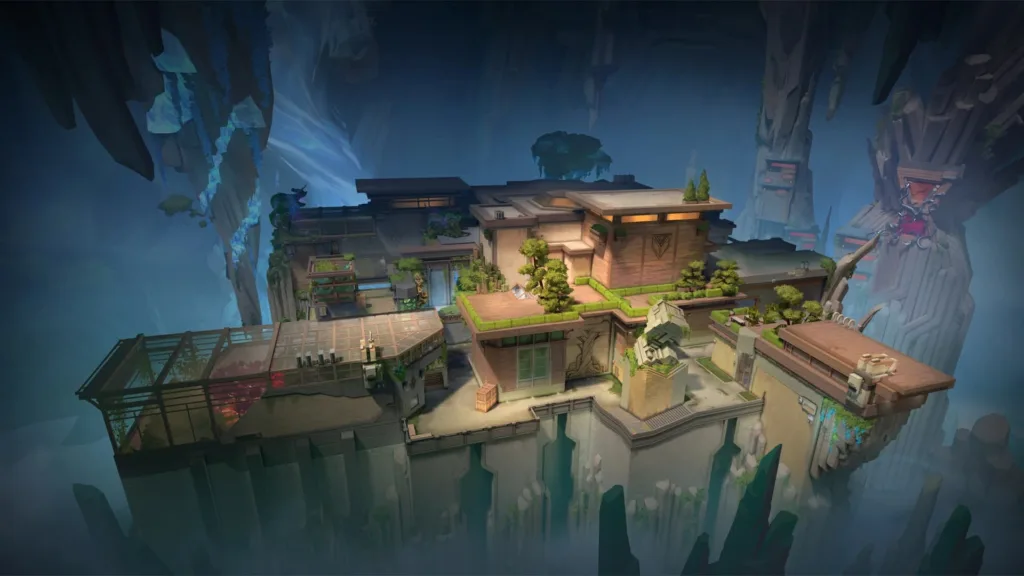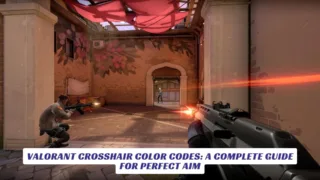
Contents
In the competitive world of Valorant, one of the key elements that players must constantly adapt to is the Valorant map rotation. In 2025, Valorant continues to keep its map pool fresh and dynamic with each new act, offering players a mix of familiar maps and newly introduced ones. Understanding the Valorant map rotation is crucial for any player looking to climb the ranks or simply enjoy the game at its fullest. In this article, we’ll explore how the competitive Valorant map rotation works, what changes to expect in Season 2025, and how these updates impact gameplay strategies, team compositions, and player decision-making. Whether you’re a new player or a pro aiming to fine-tune your map knowledge, mastering the rotating maps is essential for success.
What is Valorant’s Map Rotation?
In Valorant, the map rotation is the dynamic system in which Riot Games introduces new maps into the competitive pool while occasionally removing or reworking older ones. This means that, unlike other FPS games with a fixed map pool, Valorant constantly evolves its map selection, which provides a fresh experience for both casual and competitive players. Each act in a given season brings a new map rotation, ensuring that Valorant’s competitive play stays unpredictable and exciting.
The importance of this map rotation cannot be overstated—it affects everything from the tactics teams use to how agents are picked. Players who master the current rotation maps can gain a significant edge over opponents who may struggle with unfamiliar maps.

Valorant’s Competitive Map Pool in 2025
As we dive deeper into 2025, Valorant’s map pool continues to evolve with every act, adding and adjusting maps to keep gameplay varied and engaging. The current competitive map pool for 2025 includes a combination of fan favorites and newer additions, with Riot Games carefully balancing the inclusion of classic maps alongside reworked or entirely new ones. Here’s a snapshot of the maps currently in rotation:
Classic Maps in the Rotation:
- Bind: This iconic map, featuring teleporters that allow for strategic rotations, remains a cornerstone of the Valorant experience. Bind is all about mastering choke points and map control.
- Haven: Known for its three-bombsite design, Haven requires advanced strategies and coordination to dominate, particularly when attacking or defending mid.
- Ascent: A versatile map with a mix of open areas and tight spaces, Ascent tests a team’s control over mid and its ability to adapt quickly to changing situations.
- Icebox: A vertically challenging map where mobility and quick reactions are key, Icebox remains one of the most competitive maps due to its unique layout and fast-paced gameplay.
Recent Additions and Reworks:
- Breeze: A sprawling map known for its open spaces, Breeze emphasizes long-range engagements and requires well-coordinated team play for successful rotations.
- Fracture: A more recent addition to the map pool, Fracture has a unique layout, including a split map with two different zones and a teleportation mechanic that adds an exciting twist to gameplay.
Each of these maps presents a unique set of challenges, and the inclusion of newer maps like Fracture or reworks ensures that players must constantly evolve their strategies and agent picks to stay ahead.
How Map Rotation Affects Competitive Play
One of the defining characteristics of Valorant is how the game’s map rotation directly influences competitive play. As the map pool shifts, players are forced to adjust their tactics. For example, on a map like Haven, which has three bomb sites, a team must maintain mid-control and be versatile with their rotations. On Breeze, wide-open areas encourage long-range fights and strategy-centered gameplay, demanding excellent team communication.
The Valorant map rotation also impacts how agents are chosen. For example, on Fracture, a map with its unique split areas, agents that can teleport or quickly traverse the map, such as Omen or Killjoy, are often picked over more static agents. Meanwhile, Bind’s teleporters make agents with utility that can control space—like Sage or Cypher—particularly valuable.
For competitive players, learning to master the strategies suited to each map in the rotation is essential for maintaining an edge over opponents.

What’s New in the Valorant Map Rotation for 2025?
The 2025 Act 4 competitive map rotation brings some exciting changes to the game. Riot Games has continued to tweak the rotation based on community feedback and competitive trends. Some older maps may be temporarily removed or reworked, while new maps are introduced to keep the experience fresh. These updates help balance the game and keep the competitive environment unpredictable, forcing players to stay on their toes.
Some of the changes expected in 2025 include:
- Map Reworks: Some older maps may be reworked to balance gameplay, change sightlines, and alter bombsite layouts to ensure fairness and strategic depth.
- New Maps: Riot Games is known for introducing new, innovative maps regularly. Players can expect exciting additions that bring new challenges, such as different environments and unique mechanics.
Why Valorant’s Map Rotation Keeps the Game Fresh
The reason Valorant continues to thrive and grow in the competitive gaming scene is because of its dynamic map rotation. By frequently refreshing the map pool, Riot Games ensures that players remain engaged and excited to test new strategies. The map rotation serves as an ongoing challenge, where players need to master multiple maps rather than relying on a fixed set of strategies.
In addition, frequent updates to the rotation prevent one map from becoming overplayed. The shifting map pool promotes skill diversity and ensures that no single map dominates the competitive scene for too long.
Adapting to the Ever-Changing Map Rotation
In conclusion, the Valorant map rotation plays a fundamental role in keeping the game exciting and challenging for players of all levels. The shifting nature of the map pool ensures that Valorant remains unpredictable, with fresh challenges in every match. Whether you’re perfecting your aim on Bind, mastering rotations on Ascent, or adapting to the new mechanics in Fracture, the key to success lies in adaptability. Stay sharp, learn each map’s unique features, and experiment with different strategies to gain the upper hand in every competitive match. Embrace the challenge, and remember: mastering the Valorant map rotation is just as important as mastering your agent’s abilities. Keep adapting, keep evolving, and above all, keep enjoying the game.


